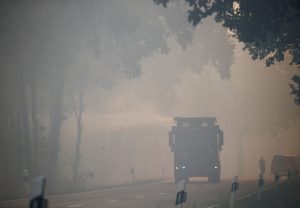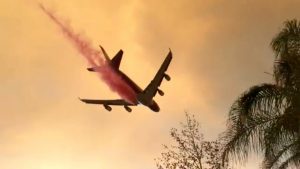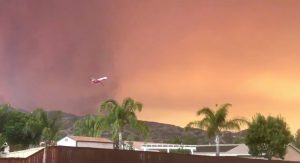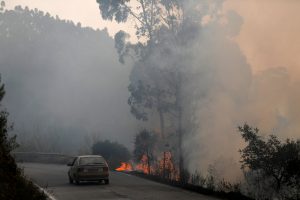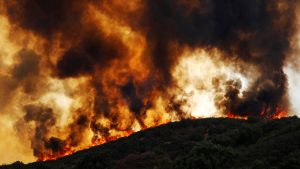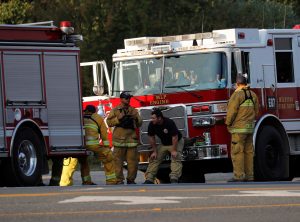
By Laura Zuckerman
PINEDALE, Wyo. (Reuters) – A wind-blown wildfire that has forced the evacuation of hundreds of homes south of the resort town of Jackson, Wyoming, prompted officials on Sunday to close 50 miles of a key highway traveled by tourists to reach Grand Teton and Yellowstone national parks.
The Roosevelt fire has scorched nearly 40,000 acres of drought-parched landscape and destroyed at least four structures, including two dwellings, since erupting Sept. 15 in the Bridger-Teton National Forest about 30 miles south of Jackson.
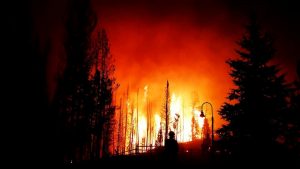
Smoke rises from a wildfire as seen from Bondurant, Wyoming, United States in this September 22, 2018 photo by Bryce Harvey. Bryce Harvey/Social Media/via REUTERS
Hundreds of firefighters battled across steep, forested terrain and bone-dry sagebrush flats to push back flames driven by winds gusting to 50 miles per hour. By Sunday, crews had managed to carve containment lines around nearly a quarter of the fire’s perimeter.
But worsening conditions later prompted the Sublette County sheriff to expand evacuations in rural subdivisions in and around the town of Bondurant, bringing the number of homes affected to about 300. Scores of additional residences were placed on standby for evacuation at a moments notice, according to sheriff’s Sergeant Travis Bingham.
He said the blaze was stoked by thick vegetation left desiccated by prolonged drought.
“We haven’t had moisture for weeks, and the winds today were going from 35 to 50 miles per hour. The fire picked it up and ran with it,” he said Sunday.
The 50-mile segment of U.S. Highway 189/191 closed by state transportation officials runs from just northwest of the oil-and-gas town of Pinedale to the southern outskirts of Jackson.
The road is the main traffic route to Grand Teton and Yellowstone for travelers approaching the two premier national parks from points south, though neither Jackson nor the parks were expected to be threatened by the blaze.
The cause of the Roosevelt fire was under investigation. It comes at the height of the region’s hunting season and is one of three that have erupted since mid-September in the Bridger-Teton Forest in western Wyoming.
Wildfires have charred more than 7 million acres across the Western United States so far this year.
(Reporting by Laura Zuckerman in Pinedale, Wyo; Editing by Steve Gorman and Michael Perry)




